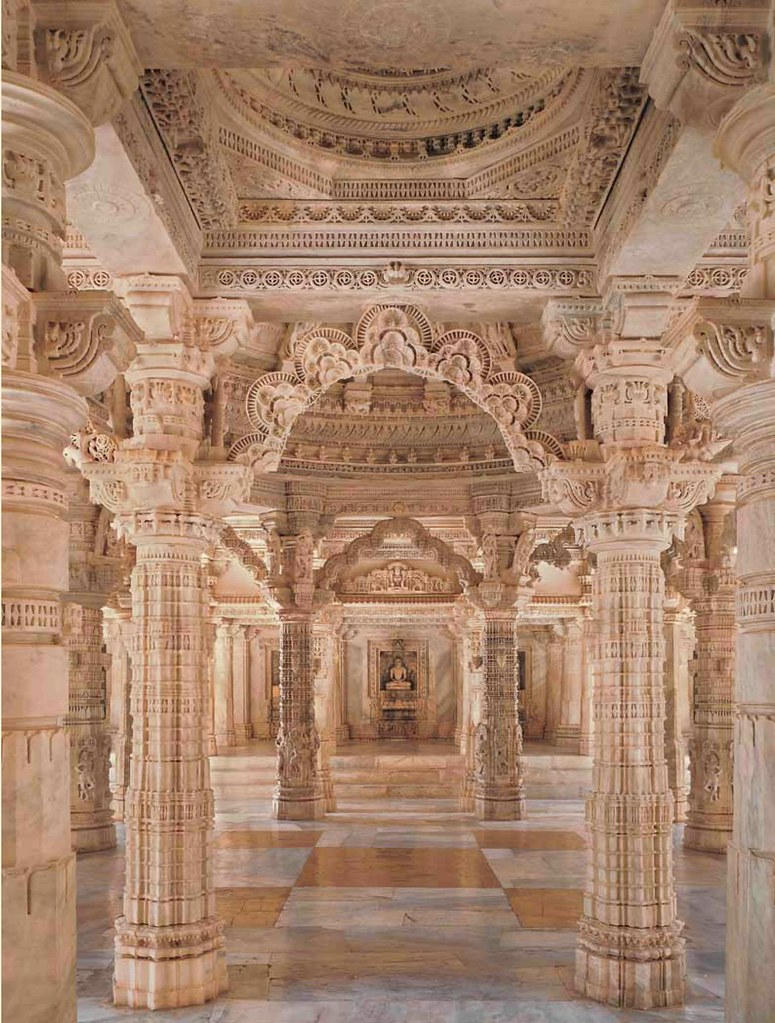 View through toranas surrounding the ranga-mandapa onto the Sanctum in Vimala Vasahi Temple
View through toranas surrounding the ranga-mandapa onto the Sanctum in Vimala Vasahi TempleThe Sanctum
The tourist cannot proceed beyond this point. However, from here, through the gudha mandapa, the Sanctum Sanctorum and the bright statue of the first Tirthankara are visible. The entrance to the cell is flanked by two standing Parsva statues standing erect, and by relief of monks and nuns. The idol of Adinatha or Rishabhanatha deliberately made to appear impersonal and not human. Tirthankaras are carved preferably in alabaster or in any translucent stone in order to indicate the spirituality of a body, which has been liberated from all earthly shackles and is thus no longer a part of this world. The eyes stare into the transcendental sphere of the next world. Even the odour and breath are not comparable with that of human beings.
Thus, the garbha graha becomes a paradise - the place for delivering a sermon on earth, frozen in stone. Unlike the Hindu temple, which symbolizes the home of a deity, the Tirthankara is beyond propitiation, isolated and indifferent to human existence. In him, the human devotee can only get a glimpse of what he seeks to achieve for himself. The worship of the liberated one helps in purging some of the layers of matter attached to the soul.
The Ambulatory
Fifty-two devakulikas (subsidiary shrines) have been arranged on an elevated platform around the central edifice, each with the statue of a Tirthankara: these date back to different periods, some much later than others have. The holy figure of fifty-two symbolises for the Jains the four eternal Tirthankaras and in addition to them, the twenty-four belonging to the past and present aeons. Besides these, some larger cells have been added in the southwest. One of these (no. 7 in the plan) contains a huge black sculpture of Adinatha whose discovery ultimately proved decisive in Vimala Shah’s procuring of the land. The tutelary goddess Ambika appeared to the founder of the temple in a dream in which she revealed to them the place where the statue, which would prove that an ancient Jain shrine existed on the site, lay concealed. A statue of this goddess worshipped in the adjoining cell (no. 8 in the plan).
On three sides, the devakulikas preceded by double columned halls with a single colonnade only in the west. It would be beyond the scope of this book to attempt to give a brief description of the endless ornamental and figural embellishments, which superimposed on all the architectural structures. However, some very unusual ceiling relief find special mention, particularly in cases which illustrate the special connection of the Jains with popular Hindu deities.
